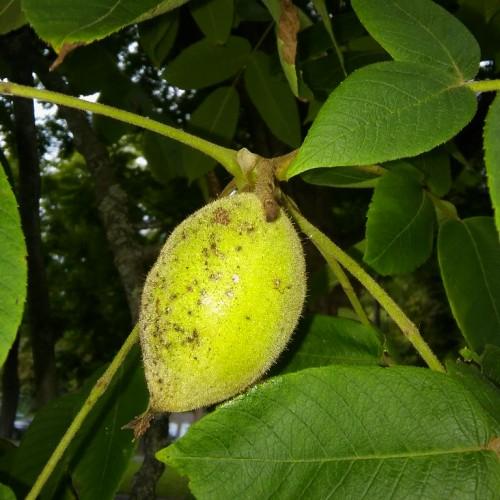
butter nut
Juglans cinerea
Cycle:
Perennial
Watering:
Minimum
Hardiness Zone:
3 - 7
Flowers:
Flowers
Sun:
Full sun
Soil:
Sandy Loamy Rocky
Fruits:
Fruits Ready In Fall
Edible:
Yes
Leaf:
Yes
Growth Rate:
Low
Maintenance:
Moderate
Drought Tolerant:
Yes
watering
Water Butter nut plants deeply and frequently in order to maintain even moisture levels. During periods of extended summer heat, you may need to water the trees twice a week. In the fall and winter, however, reduce the frequency to once a month. Verify that soil is moist to a depth of 8 to 10 inches. If the ground is too hard for a trowel to penetrate, then it’s time to water. Keep the soil consistently moist to ensure optimal health and growth of the tree.
sunlight
Butter nut (Juglans cinerea) is a deciduous tree that prefers full sun and well-drained soil. It grows best in 6-8 hours of direct sunlight per day. It is relatively tolerant of high and low temperatures and can thrive in areas with a cool summer climate. However, it is generally not recommended for locations with extreme temperatures or high wind. The best sunlight exposure for butter nut trees is morning sun with some protection from afternoon sun. Butter nuts need partial shade during the hottest parts of the day to avoid sun scald and other stress-related damage. Overall, when well-situatied in an area with adequate sunlight exposure, butter nuts can be very resilient and rewarding trees.
pruning
When it comes to pruning butter nut trees (Juglans cinerea), it is best to wait until late winter or early spring to prune them. Take care not to remove more than 1/4 of a tree's living crown with each pruning. The best way to prune butter nut trees is to focus on removing any dead, broken, or diseased wood before shaping the canopy. Since it has a tendency to grow quickly, regular pruning can help promote a more manageable size and shape. Additionally, it is important not to prune excessively, as this may damage the tree.
